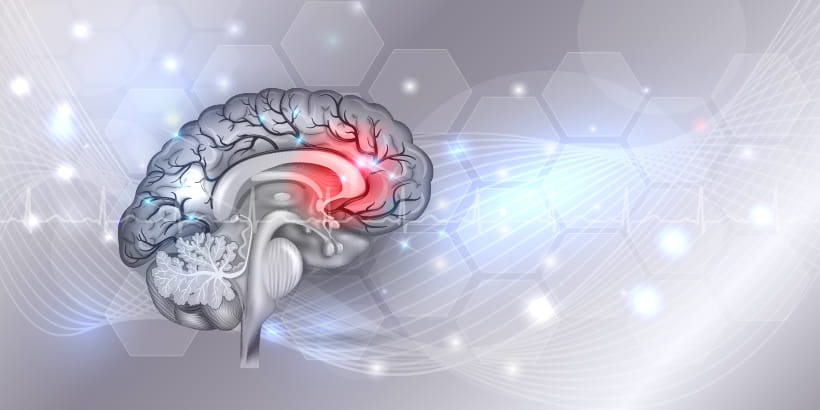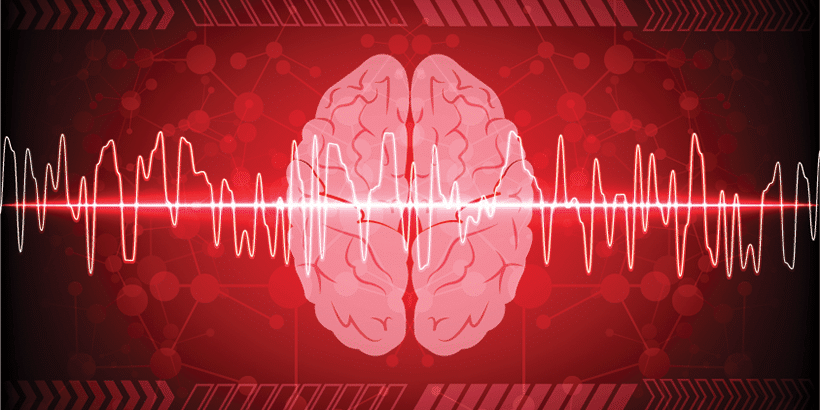The 8 Ds of Stroke Care
 Strokes are the fifth leading cause of death in the United States and the leading cause of adult disability. Even if an individual survives the initial injury and does undergo stroke care, it can lead to permanent impairment. Approximately 185,000 people die every year from a stroke. The majority of stroke events can be classified as either hemorrhagic (bleed) or ischemic (clot).
Strokes are the fifth leading cause of death in the United States and the leading cause of adult disability. Even if an individual survives the initial injury and does undergo stroke care, it can lead to permanent impairment. Approximately 185,000 people die every year from a stroke. The majority of stroke events can be classified as either hemorrhagic (bleed) or ischemic (clot).
Early recognition and treatment can not only make the difference between life and death but can also decrease long-term disabilities. To develop a streamlined response to potential stroke patients, the American Heart Association (AHA) developed the Stroke Chain of Survival. The chain involves five links or steps to be taken by patients, family members, and prehospital and emergency room personnel in caring for stroke patients. The links in the chain represent key steps in patient care to reduce the chances and degree of permanent disability and death.
The links in the chain are as follows:
- Recognize symptoms and activate EMS
- Timely EMS response
- Transport to and notify stroke center
- Guideline-based stroke care
- Quality post-stroke care

Within the Stroke Chain of Survival is the 8 Ds of stroke care, which highlight the major steps of diagnosis and treatment of stroke and key points at which delays may occur. Each of the 8 Ds in the chain of survival is critical steps that increase the likelihood of prompt diagnosis and treatment of stroke.
1. Detection:
Detection involves rapid recognition of stroke symptoms. Early symptoms of a stroke include weakness or numbness of the face, arm, or leg, especially one side of the body. Other signs and symptoms are confusion, dysphagia or aphagia, difficulty with seeing and/or walking, dizziness, and severe sudden headache with no identifiable cause. Early detection and recognition of stroke symptoms speed the implementation of appropriate medical interventions and improves patient outcomes.
2. Dispatch:
Dispatch involves early activation of emergency medical services. In most cases, this involves calling 911. Currently, half of all stroke patients are driven to the emergency department (ED) by family or friends. This prevents the ED from being ready to receive the patient and having the proper providers and systems ready for treatment. Medical dispatch should be thoroughly trained to identify a possible stroke patient so that the appropriate level of EMS services can be dispatched to the patient. Critical steps that can be accomplished by EMS are supporting the ABCs, performing a stroke assessment, establishing time from last known normal neurologic baseline, triage to a stroke center, alerting the hospital, and performing a glucose check.
3. Delivery:
Delivery is the prompt transport of the patient to a hospital, preferably a stroke center. Emergency medical personnel should be trained in performing a rapid assessment of the patient’s condition. If a stroke is suspected, the patient should be transported to an appropriate receiving hospital as soon as possible. A medical history and baseline mental status should be documented. The time since onset of symptoms should also be noted and is referred to as “time zero,” or the last time the patient was seen to be normal. Emergency medical workers need to provide pre-arrival information to the receiving facility so that the ED can prepare for the arrival of a potential stroke patient.
4. Door:
Door refers to the arrival of the patient at the ED. Ideally, the stroke team should be in place at the receiving facility prior to the patient’s arrival to ensure prompt assessment and diagnosis. According to recommendations from the National Institute of Neurological Disorders and Stroke, an assessment should be completed by an ER physician within 10 minutes of the patient’s arrival in the ED.
5. Data:
Data collection is a vital component of the chain of survival. A CT scan is an essential tool needed for an accurate diagnosis. A noncontrast CT scan should be performed to differentiate ischemic stroke from hemorrhagic stroke. The CT scan should be completed within 25 minutes of the patient arriving in the ED and should be read within 45 minutes of arrival into the ED.
6. Decision:
A decision regarding the type of treatment needed is the next step in caring for a patient with a stroke. Information, such as the type of stroke that has occurred and the time from onset of symptoms, is considered before a treatment decision is made. The severity of the stroke may also play a role in deciding what the most appropriate treatment will be. The patient and family members should also be informed of the risks and benefits of treatment options. Additional imaging techniques such as CT perfusion, CT angiography, or magnetic resonance imaging scans of patients with suspected stroke should be promptly interpreted by a physician skilled in neuroimaging interpretation.
7. Drug/Device:
Drug administration, if appropriate, is the next link in the chain of survival. If the patient is a candidate for fibrinolytic therapy, the window of opportunity for administration is narrow. According to the AHA guidelines, fibrinolytic therapy should be administered within 3 hours of the onset of symptoms. If the patient is not a candidate for drug therapy, they may qualify for endovascular therapy to remove the clot mechanically rather than with fibrinolytics. AHA inclusion and exclusion criteria for fibrinolytic therapy are as follows:
Inclusion criteria:
- Diagnosis of ischemic stroke causing measurable neurologic deficit
- Onset of symptoms <3 hours before beginning treatment
- Age ≥ 18 years
Exclusion criteria:
- Significant head trauma or prior stroke within 3 months
- Symptoms suggest subarachnoid hemorrhage
- Arterial puncture at a noncompressible site in previous 7 days
- History of intracranial hemorrhage
- Elevated BP (systolic >185 mmHg or diastolic >110 mmHg)
- Active internal bleeding
- Acute bleeding problems (low platelets, recent heparin use, current anticoagulant, current use of direct thrombin inhibitors or direct factor Xa inhibitors)
- Blood glucose <50 mg/dl
8. Disposition:
This step in stroke care focuses on the continuing care of the stroke patient. It is recommended that patients be admitted to an intensive care unit or stroke unit within 3 hours of arrival in the ED. Continued monitoring and care of a stroke patient includes frequent assessment of neurological status and monitoring of glucose levels and vitals, as well as prevention of complications.
References
- National Health Care Provider Solutions. https://nhcps.com/lesson/acls-acute-stroke-care/. Accessed July 2019.
- National Stroke Association. https://www.stroke.org/understand-stroke/. Accessed July 2019.
- American Heart Association. Advanced cardiac life support: Provider manual. United States of America: American Heart Association. 2016.


